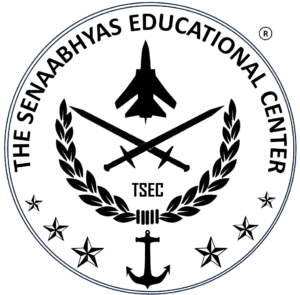Who are President bodyguard? And what’s the President’s Bodyguard called?
The Indian Army’s President’s Bodyguard (PBG) is an elite household cavalry regiment. In the Indian Army’s hierarchy of units, it is the senior-most unit. The regiment is stationed in the Rashtrapati Bhawan in New Delhi, India, since the President’s Bodyguard’s primary duty is to accompany and protect the President of India. With horses for ceremonies at the presidential palace and BTR-60 trucks for use in battle, it is outfitted as a mounted unit.
The members of the regiment are also trained as paratroopers, and they are ostensibly expected to serve as pathfinders in airborne assaults. The regiment is the replacement for the British Raj’s Governor General’s Bodyguard.

History of President’s Bodyguard
- The oldest regiment in the Indian Army is the President’s Bodyguard (PBG), which was established in 1773. It is a Regiment performing ceremonial tasks for the Indian President. Excellent riders, tank crewmen, and paratroopers make up the PBG team.
- The PBG, as it is now known, was established by the then-Governor General Warren Hastings in Varanasi, Uttar Pradesh, with a troop size of approximately 50 soldiers from the Moghal Horse, a force that was founded in 1760 by local sirdars. The unit’s size increased to 100 in the same year thanks to another 50 troops sent by Raja Cheyt Singh of Benares (now Varanasi). East India Company officer Captain Sweeny Toone served as the initial commander of the squad, with Lieutenant Samuel Black serving as his subaltern.
- It has a stellar reputation for military discipline, professionalism, and tradition. The senior-most unit of the Indian Army, known for standing “Right of the Line” during all formal and ceremonial occasions. All other Indian Army Regiments must yield to the PBG.
- The unit was established in the following manner:
- 1 Lieutenant, 1 Captain
- Four Sergeants
- 100 troops and 6 Daffadars
- Two trumpets
- Ferrier 1
Before the Nawab of Oudh transferred two Cavalry Regiments to the Company in 1777, the Bodyguard was the sole cavalry corps in the Bengal presidency. In 1776, both regiments were formed.
How much does the President’s Bodyguard Make?
As a Corps of the Indian Army, the President Bodyguard receives the same gross pay as any Officer, JCO, or Jawan in the Armoured Corps or Infantry. They do, however, also receive parachute pay because they are trained paratroopers. They also receive additional payments to maintain their uniform and other equipment because of the nature of their service
Retitling the Position Over Years
The regiment’s name has changed several times over the years:
| Year | Name |
| 1773 | Governor’s Troop of Mughals |
| 1784 | Governor-General’s Bodyguard |
| 1859 | Viceroy’s Body Guard |
| 1944 | 44th Divisional Reconnaissance Squadron |
| 1946 | Governor-General’s Bodyguard |
| 1950 | President’s Bodyguard |
Ever Thought How Many Bodyguards Does the President Have?
A total of 180 men made up the President’s Bodyguard’s establishment, which included 7 officers, 15 non-commissioned officers, and 140 enlisted personnel. The Bodyguard’s membership has changed over the course of its existence, from 50 men upon its founding to 1929 men in 1845. However, there were often 130 soldiers, or about the size of a squadron.
President’s Bodyguard And The Silver Trumpet and Trumpet Banner:
- The legendary mounted troop that serves as the President’s personal magnificent Guard was honoured by President Droupadi Murmu. In the Indian Army, it is the earliest regiment. At a ceremony on October 27 in the evening, President Droupadi Murmu gave the President’s Bodyguard the Silver Trumpet and Trumpet Banner.
- The President’s Silver Trumpet and Trumpet Banner are exclusively permitted to be carried by the one military unit of the Indian Army that serves as the President of India’s own Guard. On the occasion of the President’s Bodyguard reaching 150 years of service, the then Viceroy, Lord Reading, bestowed this honour upon them in 1923. The Silver Trumpet and Trumpet Banner were afterwards given to the Bodyguard by each successive Viceroy.
- Each President has continued the tradition of honouring the regiment. On May 14, 1957, The Silver Trumpet and Trumpet Banner were presented to the President’s Bodyguard by Dr. Rajendra Prasad, the first president of India.
Conclusion
Today’s PBG soldiers are skilled in ceremonial punctilio and have received training as combat paratroopers and armoured vehicle crewmen. The PBG personnel have demonstrated their worth in battle as well as in mounted competitions and equestrian skills since they have been finely tuned in a variety of combat techniques. The senior-most Regiment of the Indian Army, this elite group of soldiers distinguishes themselves by occupying the “Right of the Line” on all formal and ceremonial events.
Frequently Asked Questions
Question 1. Who can become President’s bodyguard in India?
Ans. The Commanding Officer has traditionally been a Brigadier or Colonel. Sikh Jats, Hindu Jats, and Rajputs now make up 1/3 of the recruits for the Regiment in India, and officers and support personnel come from all over the country.
Question 2. What is PBG full form?
Ans. President’s bodyguard
Question 3. Who is the President of India’s guard?
Ans. The oldest regiment in the Indian Army is the President’s Bodyguard (PBG), which was established in 1773. It is a Regiment performing ceremonial tasks for the Indian President. Excellent riders, tank crewmen, and paratroopers make up the PBG team.
Question 4. How does one join the PBG?
Ans. The applicant must be six feet tall and have completed the 10th or 12th grade with at least 45% of the required marks (183 cm).
Question 5. What is the age limit to join PBG?
Ans. The recruitment age range for the PBG is between 17 and 21 years old.
Question 6. President bodyguard salary in India?
Ans. 2,00,000 – 2,25,000 PA.
Question 7. Which equipment does president bodyguard have ?
Ans. BTR – 80
Question 8. What is the role of PBG?
Ans. In times of peace, ceremonial; in times of conflict, armoured reconnaissance and parachute pathfinders.
Question 9. Active years of PBG?
Ans. 1773 – present
Question 10. What is the strength of PBG?
Ans. 222 (4 officers, 20 JCOs & 198 soldiers)
You May Also Like :



